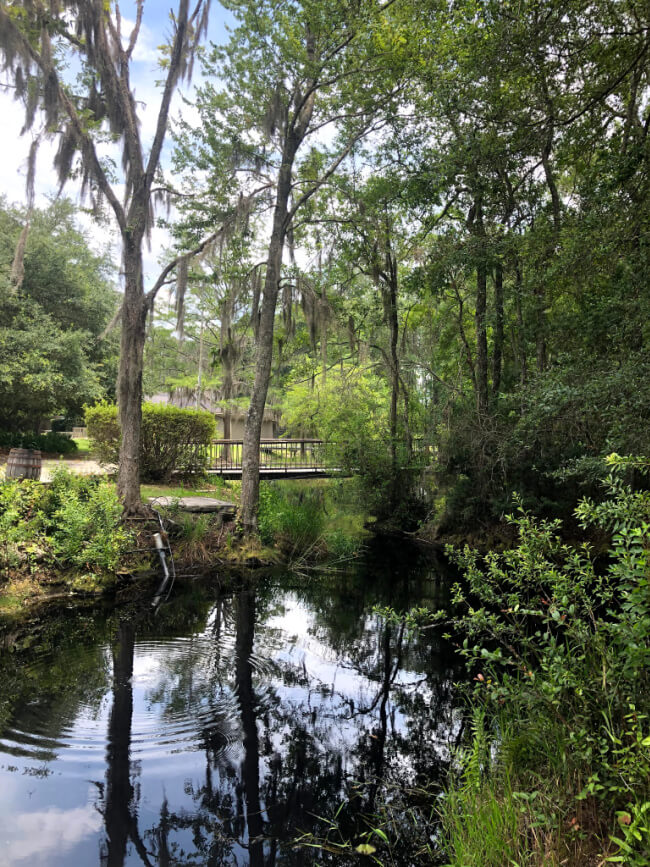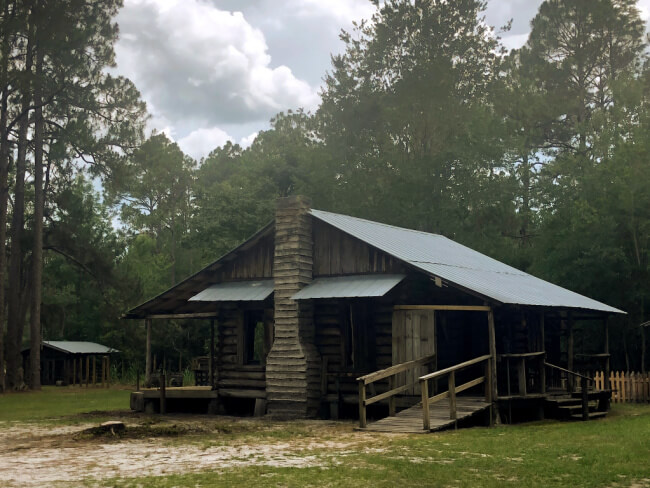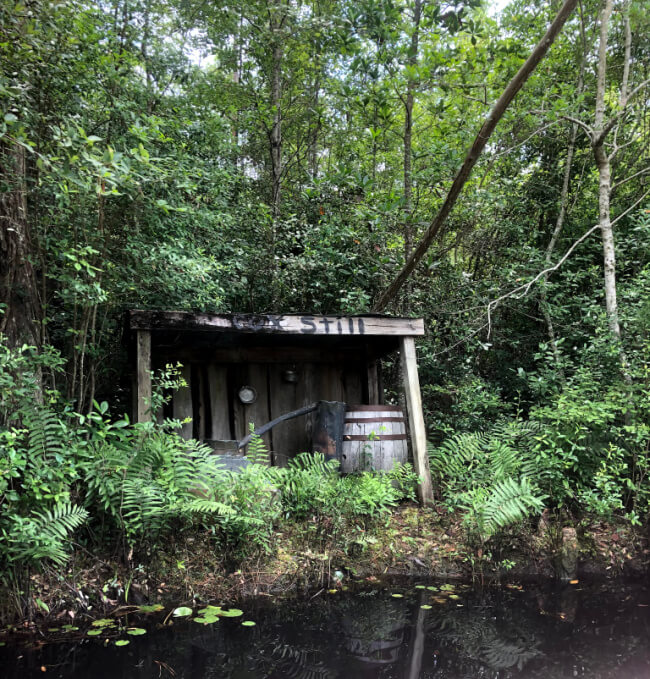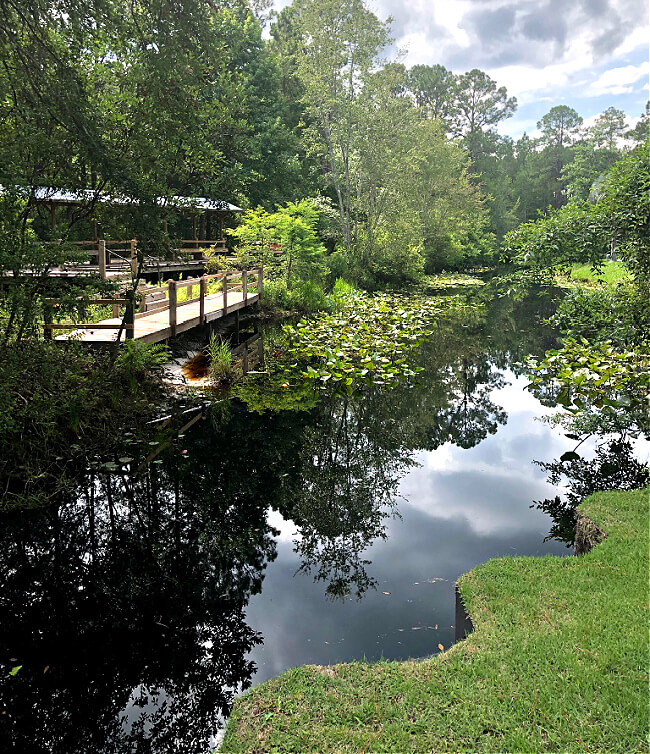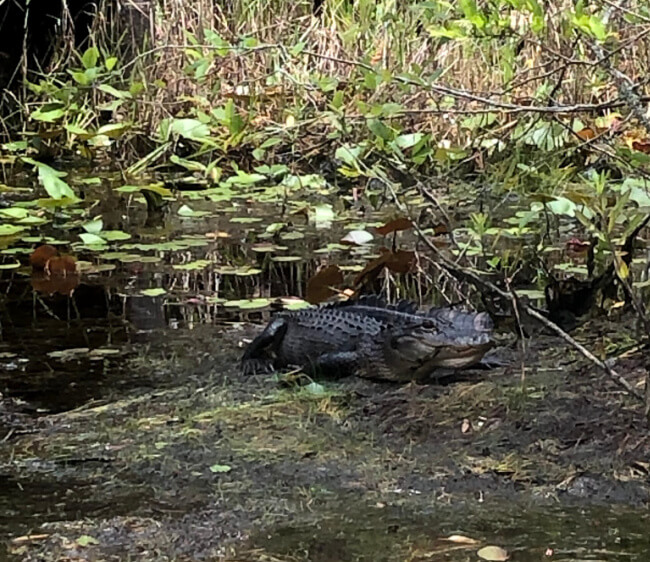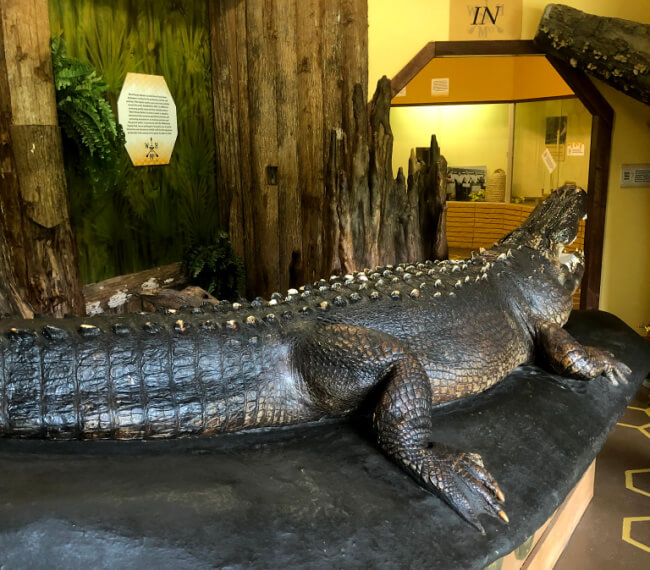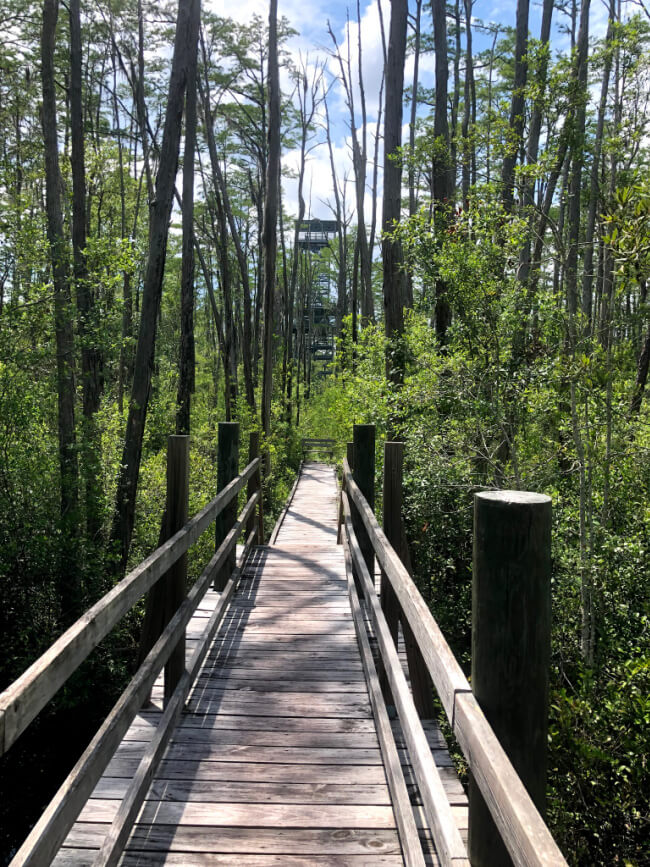Okefenokee. The name conjures up imagines of alligators, ghostly lights blinking in the night, and acre upon acre of untamed wilderness. This vast wetland- one of the largest freshwater ecosystems in the world- covers 438,000 acres of marsh, prairie, and pond. Locals say parts of the swamp have never seen humans. We’ve veered off the beaten path to spend a day exploring the habitat. Longleaf pines surround both sides of our car as we drive past the gates and down the road into Okefenokee Swamp Park.
I’m anxious to capture the promises of their website; “Boat tours on beautifully preserved waterways, wilderness walkways, Pioneer Island and native animals in their own habitat, all combine to weave a spell of pioneer American life.”
It’s a humid June day in Georgia; the midst of deer fly season. Signs on the entrance proclaim, “Insect repellent is strongly recommended,” “Bring Water Bottles,” and “Alligators are wild. Do Not Approach.” There’s a strict ‘no pet policy.’ We pay our entrance fee for the 3-Hour Swamp Experience, including general admission, a train ride, a boat ride, and a nature show.
Train rides on the “Lady Suwannee” are scheduled four times a day; 11 am, 1 pm, 3 pm & 4:30 pm. We scurry to the platform to catch the 1 pm train. Once onboard, our conductor details the swamp’s history during our 1 ½ mile journey. Originally home to the Timucuan Indians and a few Spanish missionaries, the area was later a hunting ground for the Creek and Seminole Indian tribes. Settlers appeared as early as 1805, their farms and fields expanding further and further into the swamp.
At “Pioneer Village,” we file off the train to visit a pioneer homestead. “Are these original buildings?” I ask. “The Wildes Cabin over there is a recreation. It was built on-site and donated by their descendants as a tribute,” the conductor says. “The original cabin was burned by Billy Bow-Legs, a Seminole Chief.”
“The settlers had an agreement with him not to bother each other. One day he and a hunting party killed 7 members of the Wildes family, looted, and burned the cabin. Nobody knows why he did it. Maybe because they kept encroaching into his hunting grounds, cutting down trees, and planting more fields.”
“Five of the kids weren’t at home. They’d been working in the fields. When they saw the smoke and heard the noise, they hid. After the hunting party left, they escaped and found the Georgia Militia. That was when they started forcing the Seminole out of the swamp. Of course, the swamp’s big and they knew it better than the settlers…” He trails off as we make our way back to the train.
We weave our way through the forest, passing an old moonshine steel nestled in the trees, safely hidden from the revenuers during prohibition. Magnolia and Dogwood trees, their limbs dripping with Spanish Moss, sway gently as we chug by. All too soon we arrive back at the gate. Our conductor jerks his thumb to the left. “Boat rides are at the dock.” Se
We settle into the boat with Shawn, our guide for the next 45 minutes. A Waycross native, he has spent a lifetime exploring the swamps. “You got insect repellent? The flies aren’t as bad as they were two weeks ago,” he assures us, “but you’re still gonna’ get covered in bites.” I swat at a fly sinking its fangs into my foot, drawing blood, and reapply repellent.
“Wonder why the water is black?” he asks. “It’s tannic acid. The vegetation floats down to the bottom of the water and decays. The water’s pure, though. Probably purer than some of your tap water. I wouldn’t drink it right now when it’s this low. Not enough rainfall lately.” He changes the topic to some of the wildlife we might see.
“We have over 440 species living in the park including black bears, deer, and bobcats. We’ve got four kinds of poisonous snakes in the swamp; canebreak rattlesnakes, diamondback rattlesnakes, cottonmouths, and coral snakes. And, of course, we’ve got alligators.” He stops the boat to point to an alligator basking in the sun. “This one is probably a couple of years old. There’s another one right over there.”
The journey continues. Carnivorous pitcher plants and Cyprus knees rise from the water. Rare orchids dot the bank. “You people in front watch out for spiders. Sometimes they drop down into the boat.” Our group chuckles politely, waiting for the punch line. “I’m not kidding,” he says, as we sail slowly under a bridge. “Those things are as big as my hand.” He stretches his fingers wide and then points to the bridge wall. “I saw one of them eating a bat the other morning. See that one on its web? The noise from the boat startles them. They get jumpy.” Dead silence greets this announcement. Everyone sits perfectly still, barely breathing, listening to the croak of frogs, the drone of dragonflies, and the distant roar of an alligator, until we pass under the bridge.
“Want to know more about the alligators?” he asks. “When I was a kid, one of the biggest alligators in the swamp was Old Roy. He died shortly after a wildfire that got out of control swept through the swamp in 1973. We have him preserved and on display in the Honey Museum. Now, we’re working with UGA on a research program. We tag them, take tissue samples, and track their movement.”
The boat slides into the dock. “When we get off the boat, go over and see Crazy the Alligator. He tried to kill me once. Or, you can go down the boardwalk and climb the observation tower. It’s 90 feet tall. You can get some great views.”
I want to see it all. We stroll down the boardwalk, stopping once again to admire the basking alligator and trudge up 102 steps to the top of the tower. I snap pictures and bask in the breeze. On the trek back to the nature center, I kneel on the boardwalk beside the marsh. “I want to poke it,” I say, bending over and pushing the vegetation with my finger. The green mossy covering sinks before springing back, earning its nickname “Land of the Trembling Earth.”
As we exit the park, we notice a trio of people standing by a small stream, pointing at an alligator. “Excuse me,” one of the workers says, “Could you please move up to the path? I’m not trying to be rude but that’s one of our dominant males. He’s not very nice.” I quickly step back further onto the path. We leave the park that evening; tired, hot, and itchy, but with a new respect for this primitive landscape and the wildlife that inhabit it.
Things To Know Before You Go:
*No pets are allowed. The alligators are wild and may see pets as a tasty meal.
*Plan to spend 4 to 6 hours at the park to see all the exhibits and explore the boardwalks.
*In the summer months, insect repellent and water bottles are a must for exploring the park.
*Okefenokee Swamp Park is located in Waycross, Georgia.

